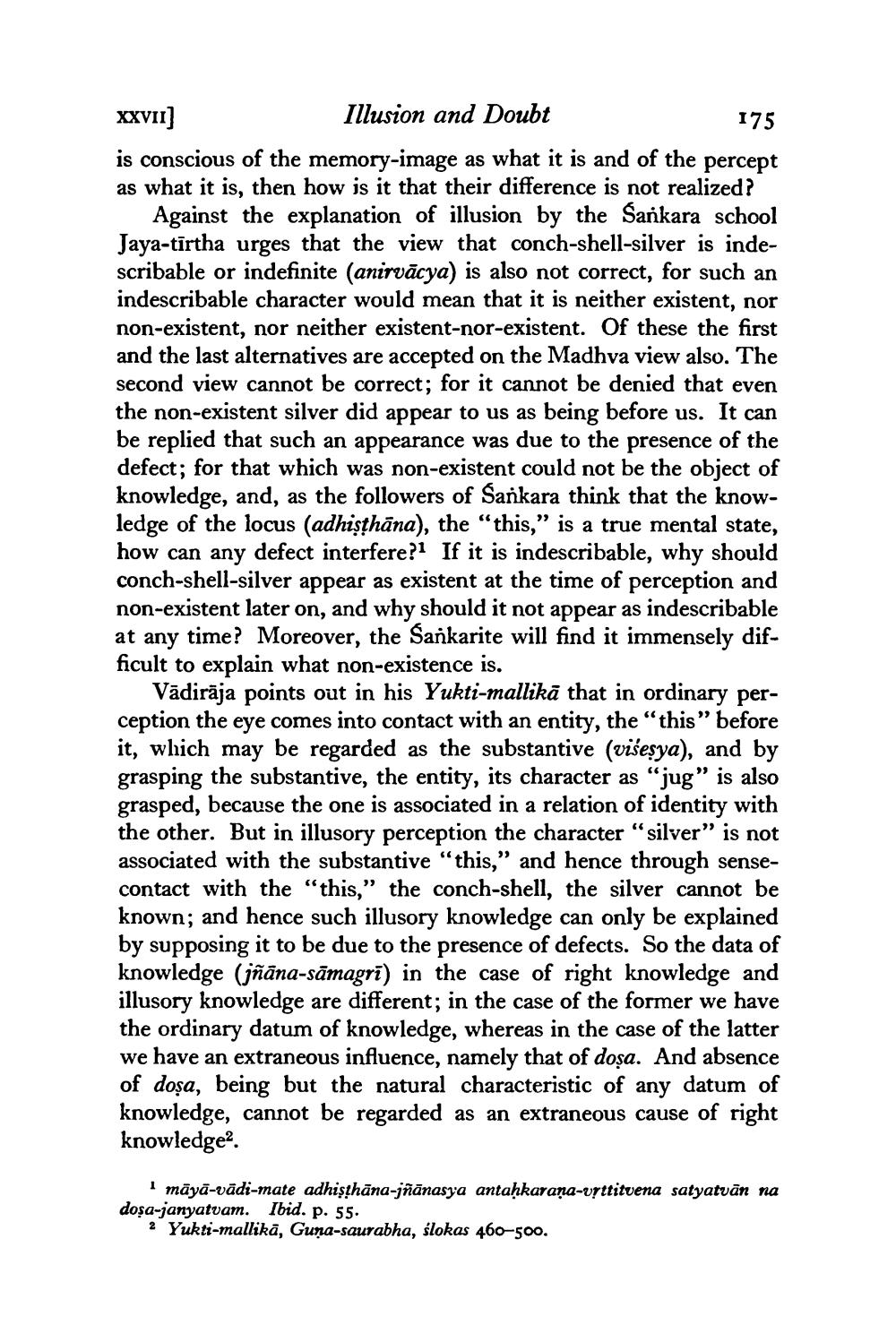________________
XXVII] Illusion and Doubt
175 is conscious of the memory-image as what it is and of the percept as what it is, then how is it that their difference is not realized?
Against the explanation of illusion by the Sankara school Jaya-tīrtha urges that the view that conch-shell-silver is indescribable or indefinite (anirvācya) is also not correct, for such an indescribable character would mean that it is neither existent, nor non-existent, nor neither existent-nor-existent. Of these the first and the last alternatives are accepted on the Madhva view also. The second view cannot be correct; for it cannot be denied that even the non-existent silver did appear to us as being before us. It can be replied that such an appearance was due to the presence of the defect; for that which was non-existent could not be the object of knowledge, and, as the followers of Sankara think that the knowledge of the locus (adhisthāna), the "this," is a true mental state, how can any defect interfere?If it is indescribable, why should conch-shell-silver appear as existent at the time of perception and non-existent later on, and why should it not appear as indescribable at any time? Moreover, the Sankarite will find it immensely difficult to explain what non-existence is.
Vădirāja points out in his Yukti-mallikā that in ordinary perception the eye comes into contact with an entity, the “this" before it, which may be regarded as the substantive (višesya), and by grasping the substantive, the entity, its character as "jug" is also grasped, because the one is associated in a relation of identity with the other. But in illusory perception the character “silver" is not associated with the substantive "this," and hence through sensecontact with the "this,” the conch-shell, the silver cannot be known; and hence such illusory knowledge can only be explained by supposing it to be due to the presence of defects. So the data of knowledge (jñāna-sāmagrī) in the case of right knowledge and illusory knowledge are different; in the case of the former we have the ordinary datum of knowledge, whereas in the case of the latter we have an extraneous influence, namely that of doșa. And absence of doșa, being but the natural characteristic of any datum of knowledge, cannot be regarded as an extraneous cause of right knowledge
māyā-vādi-mate adhisthāna-jñānasya antahkarana-vrttitvena satyatvān na dosa-janyatvam. Ibid. p. 55.
2 Yukti-mallika, Guna-saurabha, slokas 460-500.




